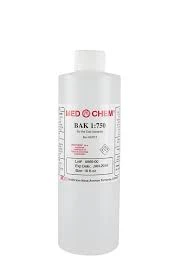pam flocculant
Understanding PAM Flocculant A Key to Efficient Water Treatment
Polyacrylamide (PAM) flocculant has garnered significant attention in various industries, particularly in water treatment processes. As environmental regulations become stricter and the demand for clean water increases, the role of flocculants like PAM is becoming increasingly indispensable. This article will provide an overview of PAM flocculant, its properties, applications, and its advantages in water treatment processes.
What is PAM Flocculant?
PAM, or polyacrylamide, is a synthetic polymer that comprises acrylamide subunits. When dissolved in water, PAM can substantially increase the viscosity of the solution, leading to its effectiveness as a flocculant. In simpler terms, it helps particulate matter clump together, forming larger aggregates or flocs that can then be easily removed from the water. PAM comes in various forms anionic, cationic, and non-ionic, with each type serving a distinct function based on the nature of the impurities present in the water.
Properties of PAM Flocculant
PAM flocculants possess several key properties that make them suitable for water treatment applications
1. High Molecular Weight PAM has a high molecular weight, which enhances its ability to bind with suspended particles in water, facilitating their removal.
2. Water Solubility PAM is highly soluble in water, allowing it to disperse quickly and act efficiently.
3. Charge Variability The ability to modify its charge (anionic, cationic, non-ionic) allows PAM to interact effectively with a variety of particles, from organic matter to inorganic sediments.
4. Environmental Compatibility Certain types of PAM are environmentally friendly and can break down into non-toxic byproducts, making them a safer choice for water treatment.
Applications of PAM Flocculant
PAM flocculant is widely utilized in various sectors, primarily in
pam flocculant

1. Municipal Water Treatment PAM is used to clarify drinking water, removing colloidal particles, organic matter, and turbidity from water sources.
2. Industrial Wastewater Treatment Industries such as paper, textile, and mining heavily rely on PAM to reduce the pollutant load in their effluents before discharge. The polymer effectively separates fine particles and promotes the sedimentation of sludge.
3. Agriculture In agricultural practices, PAM is applied in irrigation to reduce water runoff and soil erosion. It helps to improve soil structure and increases water retention, leading to better crop yields.
4. Oil Recovery PAM is also employed in enhanced oil recovery techniques, where its viscosity-increasing properties help in mobilizing the trapped oil in reservoirs.
Advantages of PAM Flocculant
The use of PAM flocculant offers several advantages in water treatment processes
1. Efficiency PAM can significantly reduce the time required for sedimentation and clarification, improving the overall efficiency of water treatment systems.
2. Cost-Effectiveness By enhancing the removal of suspended solids, PAM reduces the need for additional treatment chemicals and resources, leading to cost savings for municipalities and industries.
3. Versatility Given its varying types and forms, PAM can be customized for different water quality challenges, making it a versatile tool for different applications.
4. Operational Simplicity PAM flocculants are easy to use and can be incorporated into existing treatment processes without major modifications.
Conclusion
In summary, PAM flocculant plays a vital role in modern water treatment, helping to address the critical challenges posed by pollution and water scarcity. Its unique properties, effective performance, and versatility make it a preferred choice in various applications, from municipal water treatment to industrial wastewater management and agricultural practices. As the demand for clean water continues to grow, the importance of PAM flocculant in achieving sustainable water treatment solutions cannot be overstated. Adopting innovative technologies and practices, including the use of PAM, will be crucial in meeting the future water needs of the world while safeguarding our precious water resources.
-
lk-319-special-scale-and-corrosion-inhibitor-for-steel-plants-advanced-solutions-for-industrial-water-systemsNewsAug.22,2025
-
flocculant-water-treatment-essential-chemical-solutions-for-purification-processesNewsAug.22,2025
-
isothiazolinones-versatile-microbial-control-agents-for-industrial-and-consumer-applicationsNewsAug.22,2025
-
scale-inhibitor-key-solutions-for-water-system-scale-preventionNewsAug.22,2025
-
organophosphonates-versatile-scale-inhibitors-for-industrial-water-systemsNewsAug.22,2025
-
scale-and-corrosion-inhibitor-essential-chemical-solutions-for-water-system-maintenanceNewsAug.22,2025





